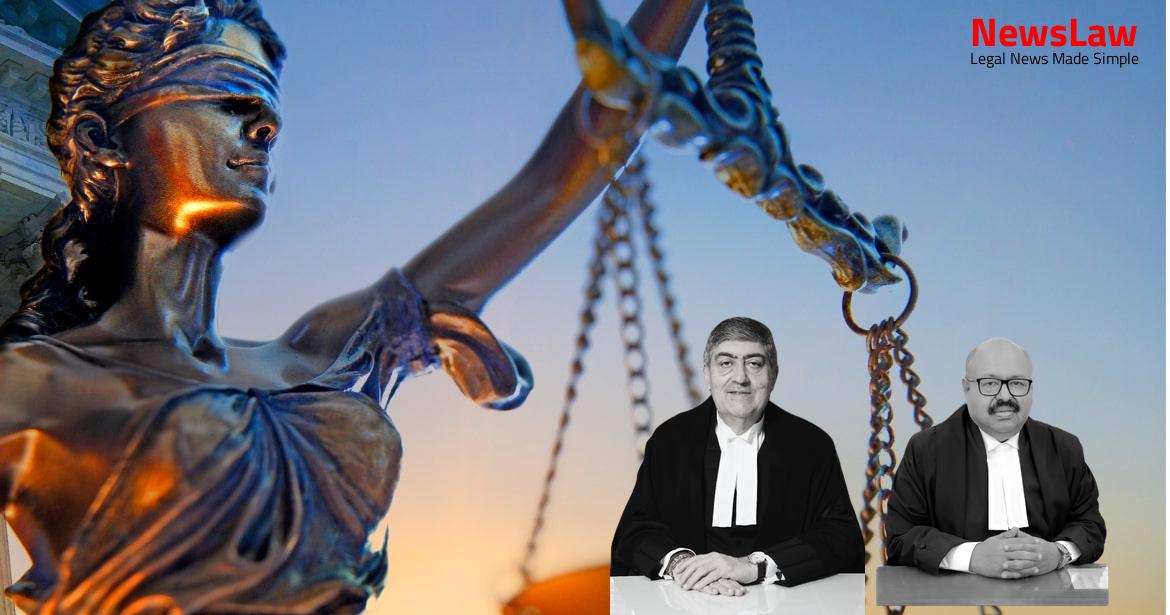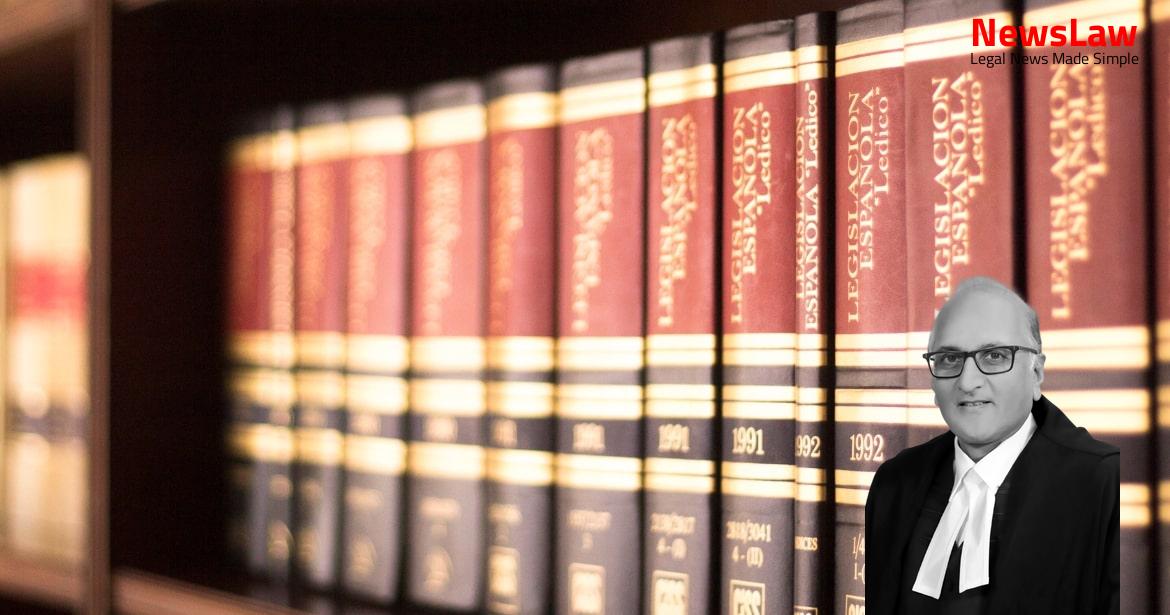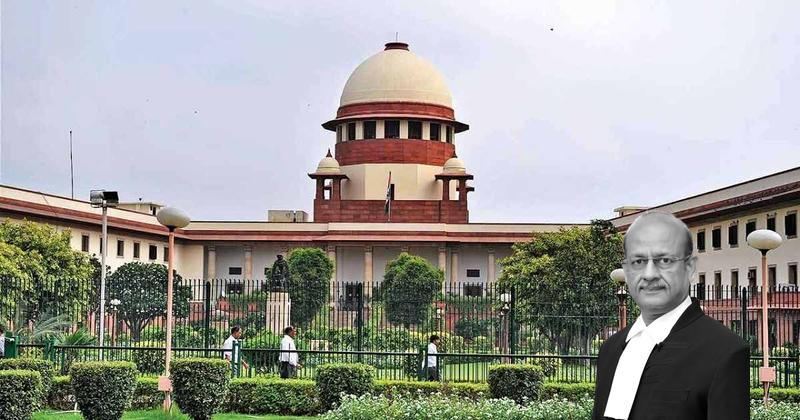Explore the intricate legal analysis in a group assault case where the court examines the nuances of witness identification, the significance of Test Identification Parades, and the application of the Representation of the People Act. The case involves detailed scrutiny of eyewitness testimonies, adherence to legal guidelines, and the weightage given to different forms of evidence. This summary delves into the crucial legal aspects of the court’s decision-making process.
Facts
- Dispute between two groups led to the incident
- Accused did not present any defense evidence
- One tall person with a long nose attacked with a sword
- 6 accused carried knives, khanjar, and farsa
- Balu Mandpe was rushed to a hospital but declared dead
- Prosecution presented 11 witnesses and other evidence
- Appellant assaulted the informant with a sword
- Informant did not name the appellant in the FIR
- Accused formed an unlawful assembly to cause Balu’s death
- Charges relatable to multiple sections of the IPC were filed
- Accused group used sharp-edged weapons during the assault
- Appellant denied the charges in defense
- The appellant/accused No.6 was additionally convicted u/s 324 IPC and sentenced to three years of rigorous imprisonment and a fine of Rs.2000.
- The conviction of the appellant and other accused was primarily based on the ocular evidence of 4 eyewitnesses.
- The accused were also convicted u/s 147, 148 of the IPC and sentenced accordingly.
- The appeal was directed against the judgement dated 09.05.2014, where the Crl. Appeal No.236/2011 was dismissed and the appellant’s conviction u/s 302, 120B, 147, 148, and Section 324 was upheld.
- The deceased Balu Mandpe was chatting with friends outside his house on 22.01.2009 when the incident occurred at around 9.45 pm.
Also Read: Insurance Claim Repudiation due to Fire Incident: Court’s Legal Analysis
Arguments
- Appellant was not named amongst the six accused in the FIR.
- No Test Identification Parade (TIP) was arranged by the prosecution.
- The identity of the appellant is not clearly established.
- The Informant named the appellant in a supplementary statement recorded under Section 161 of CrPC.
- Witnesses PW2, PW4, and PW6 also named the appellant in their statements.
- The counsel argues that the involvement of the appellant in the incident is beyond doubt as identified by all witnesses.
- No necessity to conduct a Test Identification Parade (TIP) for the appellant as he was identified by witnesses.
- A specific charge under Section 324 is framed against the appellant for giving the sword blow on the informant (PW1).
Analysis
- The appellant, despite not being named in the FIR, was positively identified by multiple eyewitnesses.
- Variations in witness statements and depositions were noted, emphasizing the need for adherence to guidelines for criminal trials.
- The colloquial variations in naming the appellant as ‘Lala’ or ‘Lalya’ were not deemed significant to render the identification unreliable.
- Rival contentions regarding witness statements and the lack of a TIP were discussed.
- The FIR being silent on the appellant’s name did not undermine the prosecution’s case as other reliable evidence existed.
- The absence of a TIP was considered unnecessary due to the clear identification of the appellant by key witnesses.
- The investigating officer acknowledged the presence of the appellant and other accused but feigned ignorance of the events that followed.
- The importance of context in understanding the complexities of a case involving a group attack with deadly weapons was highlighted.
- Test Identification Parades (TIPs) are meant to assist investigating agencies in ensuring their investigation into an offense is on the right track.
- Identification in TIPs is used as corroborative evidence in court.
- State counsel argued the TIP was not essential as the appellant was known to eyewitnesses and identified by name and appearance.
- TIPs do not constitute substantive evidence and are a matter for the courts to decide on.
- The weightage of evidence from TIPs may be accepted without corroboration in appropriate cases.
- The necessity for holding TIPs arises when the accused are not previously known to witnesses.
- TIPs are part of the investigation stage, not mandatory under the Code of Criminal Procedure, and governed by Section 162 of the Code.
- The prosecution has presented convincing evidence of the appellant’s involvement in a conspiracy with all the accused in the assault case.
- The conviction of the appellant by the trial court, upheld by the High Court, is deemed appropriate.
- The appeal is dismissed, and the State is advised to consider the appellant’s case for remission based on its own merits.
- The appellant’s identity as part of the attacking group and his specific role in the assault have been conclusively established.
- The failure to conduct a Test Identification Parade (TIP) for the appellant does not invalidate his conviction, as his identification by name in the eyewitness testimonies is deemed sufficient.
Decision
- The judgment delves into the aspects and implications of the RPC (Representation of the People Act).
- It analyzes the provisions of the RPC in detail and discusses its relevance in the case at hand.
- The RPC plays a crucial role in ensuring fair and transparent electoral processes.
- The court’s interpretation of the RPC is essential for determining the legal standing of the parties involved.
- Various legal precedents related to the RPC are cited and examined to support the court’s decision.
Case Title: LALA @ ANURAG PRAKASH AASRE Vs. THE STATE OF MAHARASHTRA (2021 INSC 415)
Case Number: Crl.A. No.-000540-000540 / 2018



